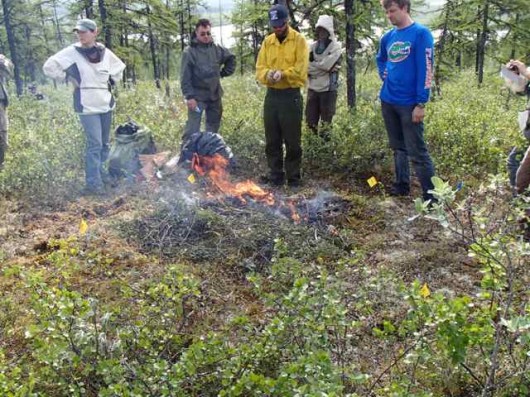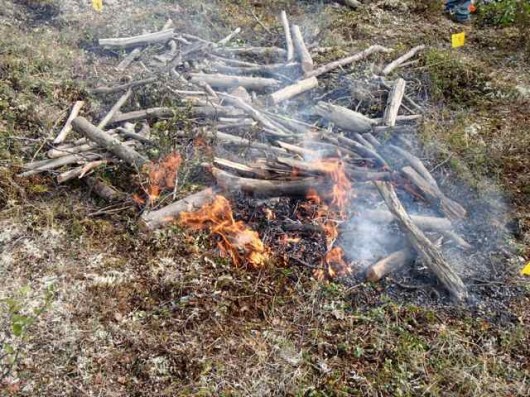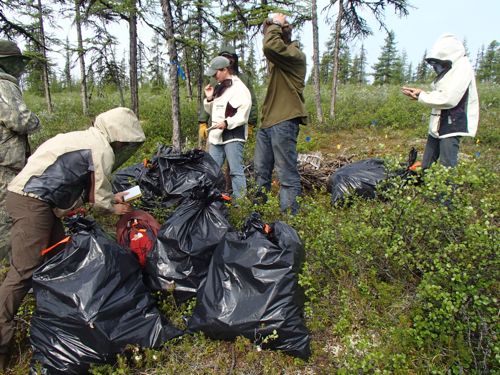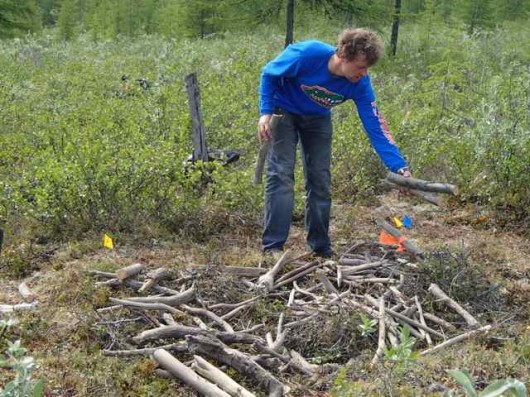(This post is by Mark Paricio, a PolarTREC teacher accompanying the Polaris Project this year.
To read all of Mark’s posts, go to: http://www.polartrec.com/expeditions/siberian-arctic-systems-study )
Conducting an Experimental Burn
This morning, Dr. Heather Alexander’s team conducted their first experimental burns to test the effect of burn severity on the regrowth of the larch forests and on the consequent implications on permafrost soils. (Please see my journal of July 3 for an explanation of this project.)
The first indication that something different was happening was the long line of scientists and students carrying bags and bundles of carefully weighed fuel to the burn plots staging area. The fuels used in the experiment were gathered in the forests surrounding the science station and have been dried and sorted into small twigs and leaf litter, medium sized twigs, and thicker branches and logs.
The next step was to spread the appropriate mass of the various fuels on each of the plots that was to be burned. The 16 plots (2 m by 2 m squares) were randomly divided into low, moderate, and high severity burns, in addition to plots set aside as experimental controls. The higher the burn severity, the greater the amount of fuel was added to the plot.
Finally, the plots were each burned individually with many people available to prevent the unintentional spread of the fire to the surrounding forest. It was interesting to see the difference between the low and high severity burns, both in terms of the duration of the fire and the heat produced in the process. The factors that affect the severity of the burns were the quantity and size of the fuel used on the different plots. The higher mass of thicker branches and logs used on the high severity plots burned hotter and much longer than the lower mass of smaller twigs and leaf litter used on the low severity burn plots.

Small twigs and leaf litter were used to create a low severity fire on this plot. The fire burned well but did not last long.

Larger branches were used to create a high severity fire on this plot. The wind picked up and created quite a blaze that smoldered for an extended period of time.
Before we leave, Heather’s team will again measure the physical parameters of each plot. Later in the fall, Sergey Davidov of the Northeast Science Station will sow seeds on each plot. Next summer, Heather plans to return and measure the effects of the burn severity on the germination of the larch seeds and on the underlying active layer and permafrost soils.
Stay curious my friends! – Mark Paricio





